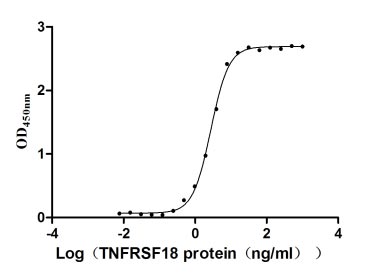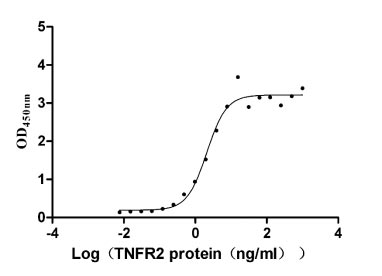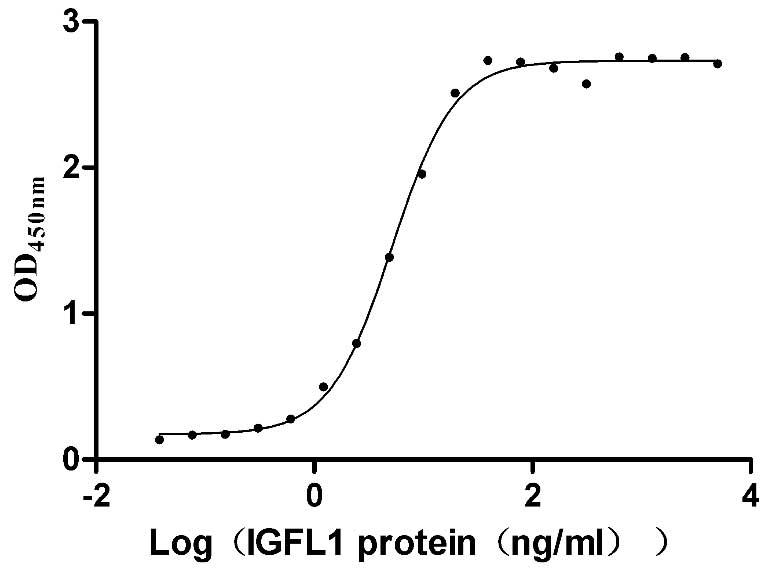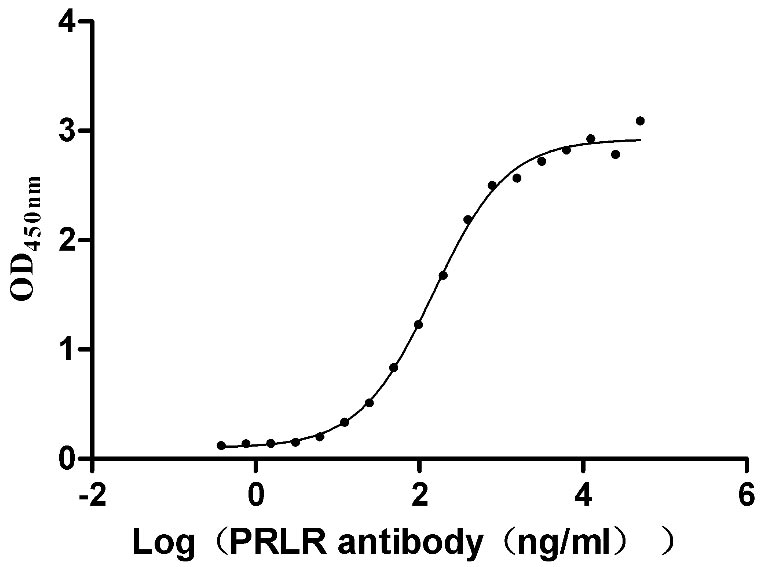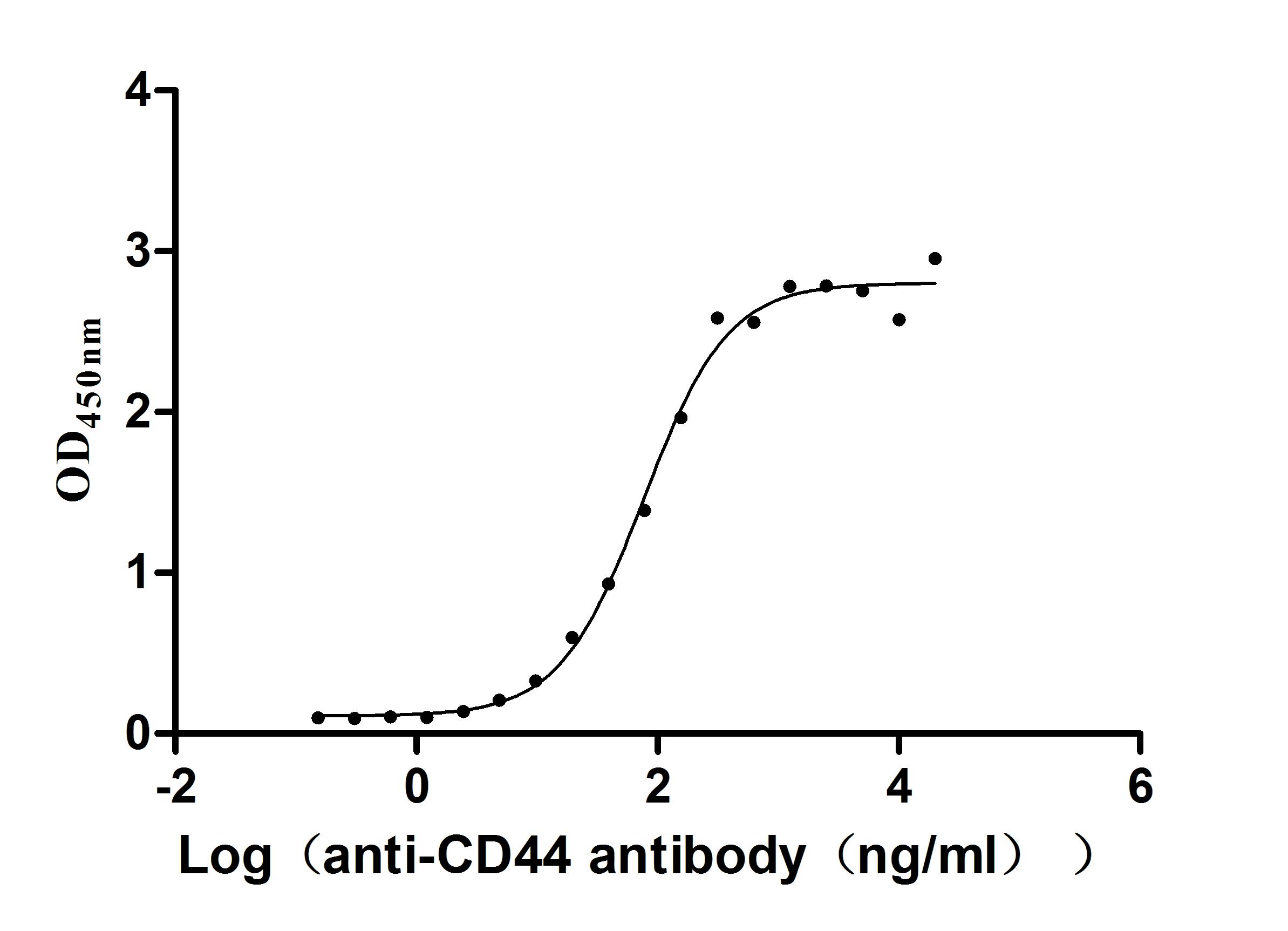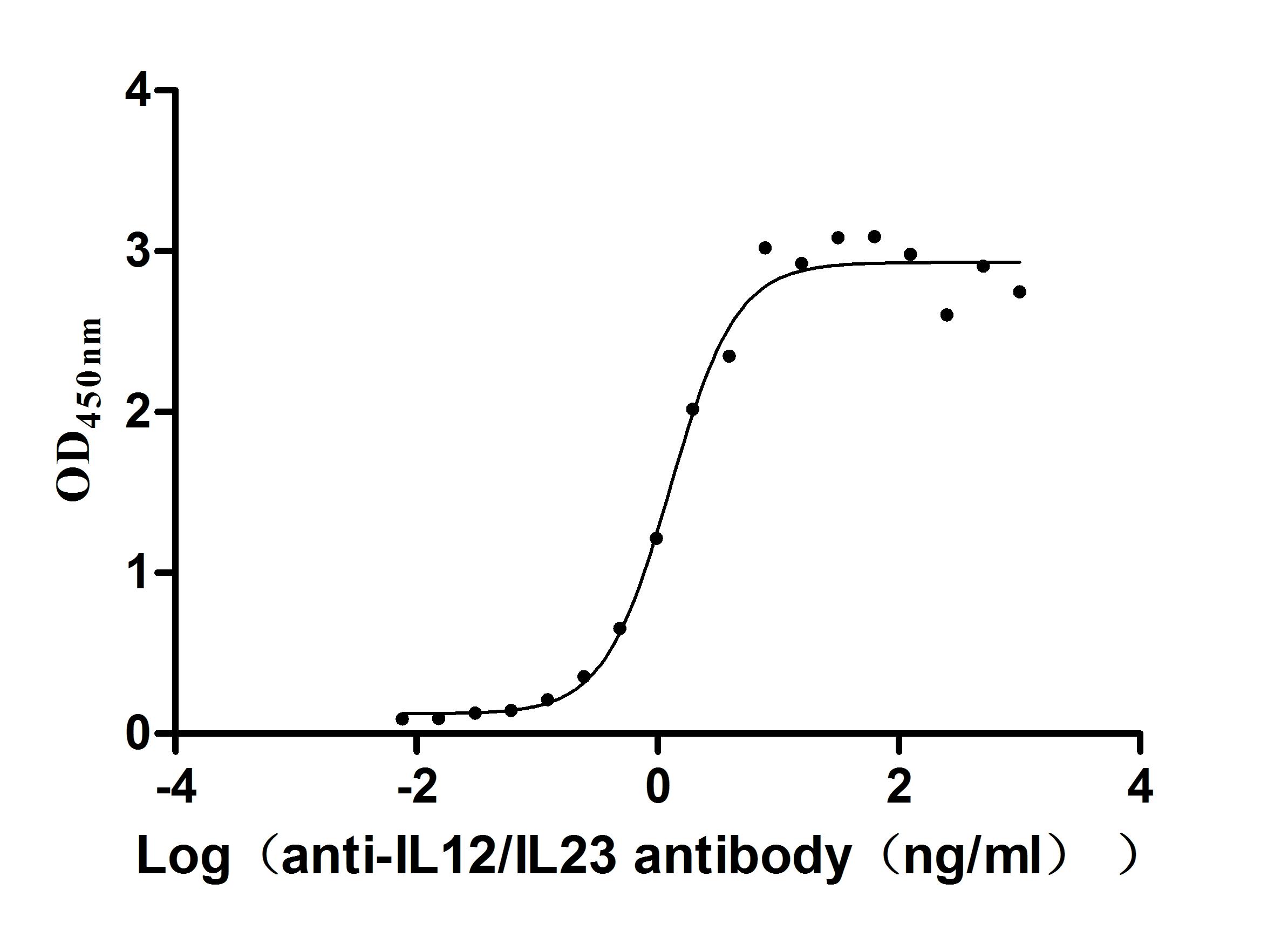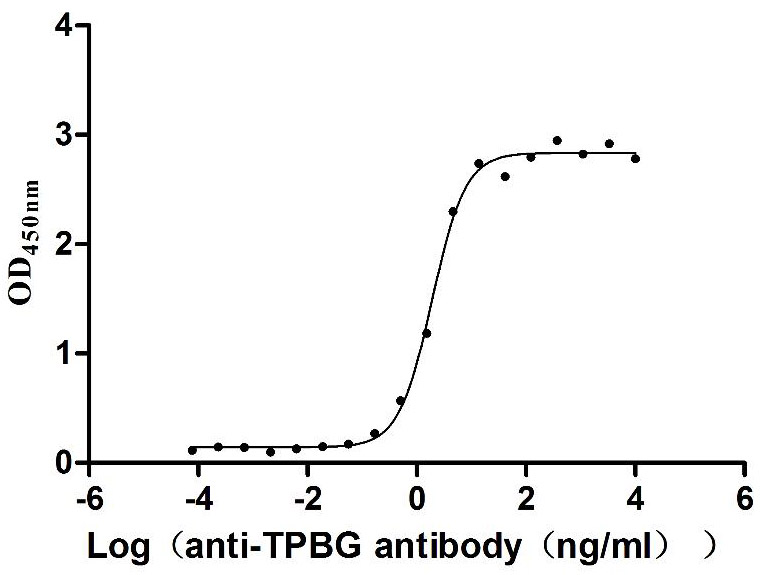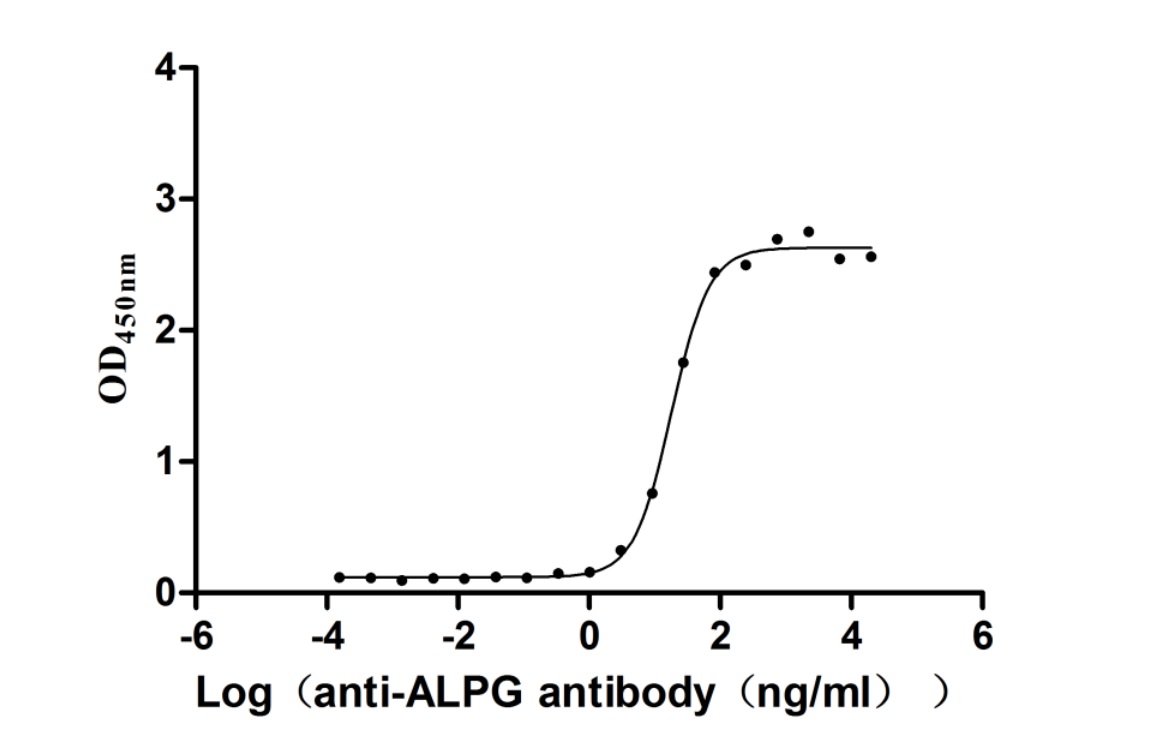Recombinant Human Sphingosine-1-phosphate lyase 1 (SGPL1), partial
-
中文名稱:人SGPL1重組蛋白
-
貨號:CSB-YP021197HU1
-
規格:
-
來源:Yeast
-
其他:
-
中文名稱:人SGPL1重組蛋白
-
貨號:CSB-EP021197HU1
-
規格:
-
來源:E.coli
-
其他:
-
中文名稱:人SGPL1重組蛋白
-
貨號:CSB-EP021197HU1-B
-
規格:
-
來源:E.coli
-
共軛:Avi-tag Biotinylated
E. coli biotin ligase (BirA) is highly specific in covalently attaching biotin to the 15 amino acid AviTag peptide. This recombinant protein was biotinylated in vivo by AviTag-BirA technology, which method is BriA catalyzes amide linkage between the biotin and the specific lysine of the AviTag.
-
其他:
-
中文名稱:人SGPL1重組蛋白
-
貨號:CSB-BP021197HU1
-
規格:
-
來源:Baculovirus
-
其他:
-
中文名稱:人SGPL1重組蛋白
-
貨號:CSB-MP021197HU1
-
規格:
-
來源:Mammalian cell
-
其他:
產品詳情
-
純度:>85% (SDS-PAGE)
-
基因名:
-
Uniprot No.:
-
別名:SGPL1; KIAA1252; Sphingosine-1-phosphate lyase 1; S1PL; SP-lyase 1; SPL 1; hSPL; Sphingosine-1-phosphate aldolase
-
種屬:Homo sapiens (Human)
-
蛋白長度:Partial
-
蛋白標簽:Tag?type?will?be?determined?during?the?manufacturing?process.
The tag type will be determined during production process. If you have specified tag type, please tell us and we will develop the specified tag preferentially. -
產品提供形式:Lyophilized powder
Note: We will preferentially ship the format that we have in stock, however, if you have any special requirement for the format, please remark your requirement when placing the order, we will prepare according to your demand. -
復溶:We recommend that this vial be briefly centrifuged prior to opening to bring the contents to the bottom. Please reconstitute protein in deionized sterile water to a concentration of 0.1-1.0 mg/mL.We recommend to add 5-50% of glycerol (final concentration) and aliquot for long-term storage at -20℃/-80℃. Our default final concentration of glycerol is 50%. Customers could use it as reference.
-
儲存條件:Store at -20°C/-80°C upon receipt, aliquoting is necessary for mutiple use. Avoid repeated freeze-thaw cycles.
-
保質期:The shelf life is related to many factors, storage state, buffer ingredients, storage temperature and the stability of the protein itself.
Generally, the shelf life of liquid form is 6 months at -20°C/-80°C. The shelf life of lyophilized form is 12 months at -20°C/-80°C. -
貨期:Delivery time may differ from different purchasing way or location, please kindly consult your local distributors for specific delivery time.Note: All of our proteins are default shipped with normal blue ice packs, if you request to ship with dry ice, please communicate with us in advance and extra fees will be charged.
-
注意事項:Repeated freezing and thawing is not recommended. Store working aliquots at 4°C for up to one week.
-
Datasheet :Please contact us to get it.
相關產品
靶點詳情
-
功能:Cleaves phosphorylated sphingoid bases (PSBs), such as sphingosine-1-phosphate, into fatty aldehydes and phosphoethanolamine. Elevates stress-induced ceramide production and apoptosis. Required for global lipid homeostasis in liver and cholesterol homeostasis in fibroblasts. Involved in the regulation of pro-inflammatory response and neutrophil trafficking. Modulates neuronal autophagy via phosphoethanolamine production which regulates accumulation of aggregate-prone proteins such as APP. Seems to play a role in establishing neuronal contact sites and axonal maintenance.
-
基因功能參考文獻:
- describe the sequential expression and localization of the endogenous S1P regulators SGPP-1 and SGPL-1 and highlight their contribution to the sphingolipid rheostat in inflammation. PMID: 29375197
- Study verifies the role of a high-ranked gene in dysregulation of sphingolipid metabolism in the disease and demonstrate that inhibiting the enzyme, sphingosine-1-phosphate lyase 1 (SPL), has neuroprotective effects in Huntington's disease models. PMID: 28931805
- Loss of SGPL1 function is associated with congenital nephrotic syndrome (CNS), adrenal calcifications, and hypogonadism. PMID: 28181337
- results demonstrate that Sphingosine 1-phosphate lyase (SPL) is a host factor that augments type I IFN responses during influenza A virus infection; study delineates the relationship between IKKepsilon and SPL, which provides a mechanistic understanding of the pro-IFN activity of SPL PMID: 28600291
- Mutations in sphingosine-1-phosphate lyase cause nephrosis with ichthyosis and adrenal insufficiency PMID: 28165339
- Sphingosine-1-phosphate lyase mutations cause primary adrenal insufficiency and steroid-resistant nephrotic syndrome. PMID: 28165343
- Overexpression of sphingosine-1-phosphate lyase 1 (SGPL1), reverse the interleukin-8 (IL-8) secretion enhancing effect of microRNA miR-125b in trophoblast cell line HTR8/SVneo cells. PMID: 27935985
- Report a candidate gene (SGPL1) for autosomal recessive Charcot-Marie-Tooth disease with atypical disease course. Studies in patient-derived biosamples suggested that this phenotype is due to partial loss of SGPL1 function. Neuron-specific downregulation of the Drosophila orthologue impaired the morphology of the neuromuscular junction and caused progressive neurodegeneration PMID: 28077491
- SPHK1:SGPL1 ratio correlated with increased cellular sphingosine-1-phosphate (S1P), and S1P correlated with drug resistance (IC50). PMID: 26493335
- Results show that dissociation of SHP-1 from spinophilin is followed by an increase in the binding of spinophilin to PP1. PMID: 25785436
- Sphingosine-1-phosphate lyase downregulation promotes colon carcinogenesis through STAT3-activated microRNAs. PMID: 25347472
- S1P lyase - by facilitating S1P1 receptor recycling - is essential for S1P-mediated sustained signaling PMID: 24704119
- results highlight the importance of S1P in AD suggesting the existence of a global deregulation of S1P signaling in this disease from its synthesis by SphK1 and degradation by SPL to its signaling by the S1P1 receptor. PMID: 24468113
- The cells expressing SGPL1 in the parenchyma were CD68(+) APCs. PMID: 24825162
- Data show that a easy assay for 2-hydroxyacyl-CoA lyase (HACL1) and sphingosine-1-phosphate lyase (SGPL1) activities was developed. PMID: 24323699
- SPL expression and activity are downregulated in cancerous tissues, there is a relationship between loss of SPL expression and prostate cancer aggressiveness. PMID: 22784711
- S1P(ext) mediated endothelial cell motility is dependent on intracellular S1P production, which is regulated, in part, by SphK1 and S1PL. PMID: 21304987
- S1P lyase regulates DNA damage responses through a sphingolipid feedback mechanism. PMID: 21368890
- high SPL transcription of H1155 cells was regulated by Sp1 and GATA-4/Sp1 complex formation, both of which bind to Sp1 sites of the 5'-SPL promoter. PMID: 21184844
- Overexpression of sphingosine 1-phosphate lyase (SPL), which induces the degradation of sphingosine 1-phosphate, interfered with the amplification of infectious influenza virus. PMID: 20519401
- sphingosine-1-phosphate lyase is a dual modulator of sphingosine 1-phosphate and ceramide metabolism as well as a regulator of cell fate decisions PMID: 14570870
- genetic or epigenetic changes affecting intestinal sphingosine-1-phosphate metabolism may correlate with and potentially contribute to carcinogenesis PMID: 17090686
- extracellular S1P is dephosphorylated and subsequently converted by cells, which appears to be important for clearance of the signaling molecule S1P in the local tissue environment after infections or injuries PMID: 18172856
- Data suggest that lymphocyte trafficking is particularly sensitive to variations in sphingosine 1-phosphate lyase (S1PL) activity and suggest that there is a window in which partial inhibition of S1PL could produce therapeutic levels of immunosuppression. PMID: 19119317
顯示更多
收起更多
-
相關疾病:Nephrotic syndrome 14 (NPHS14)
-
亞細胞定位:Endoplasmic reticulum membrane; Single-pass type III membrane protein; Cytoplasmic side.
-
蛋白家族:Group II decarboxylase family, Sphingosine-1-phosphate lyase subfamily
-
組織特異性:Ubiquitously expressed. Expressed in fetal and adult adrenal gland (at protein level).
-
數據庫鏈接:
Most popular with customers
-
Recombinant Human Tumor necrosis factor receptor superfamily member 18 (TNFRSF18), partial (Active)
Express system: Mammalian cell
Species: Homo sapiens (Human)
-
Recombinant Human Lymphotoxin-alpha (LTA) (Active)
Express system: Mammalian cell
Species: Homo sapiens (Human)
-
Recombinant Human IGF-like family receptor 1 (IGFLR1), partial (Active)
Express system: Mammalian cell
Species: Homo sapiens (Human)
-
Recombinant Human Prolactin receptor (PRLR), partial (Active)
Express system: Mammalian cell
Species: Homo sapiens (Human)
-
Recombinant Macaca fascicularis CD44 antigen (CD44), partial (Active)
Express system: Mammalian cell
Species: Macaca fascicularis (Crab-eating macaque) (Cynomolgus monkey)
-
Recombinant Human IL12B&IL12A Heterodimer Protein (Active)
Express system: Mammalian cell
Species: Homo sapiens (Human)
-
Recombinant Macaca fascicularis Trophoblast glycoprotein (TPBG), partial (Active)
Express system: Mammalian cell
Species: Macaca fascicularis (Crab-eating macaque) (Cynomolgus monkey)
-
Recombinant Human Alkaline phosphatase, germ cell type (ALPG) (Active)
Express system: Mammalian cell
Species: Homo sapiens (Human)


